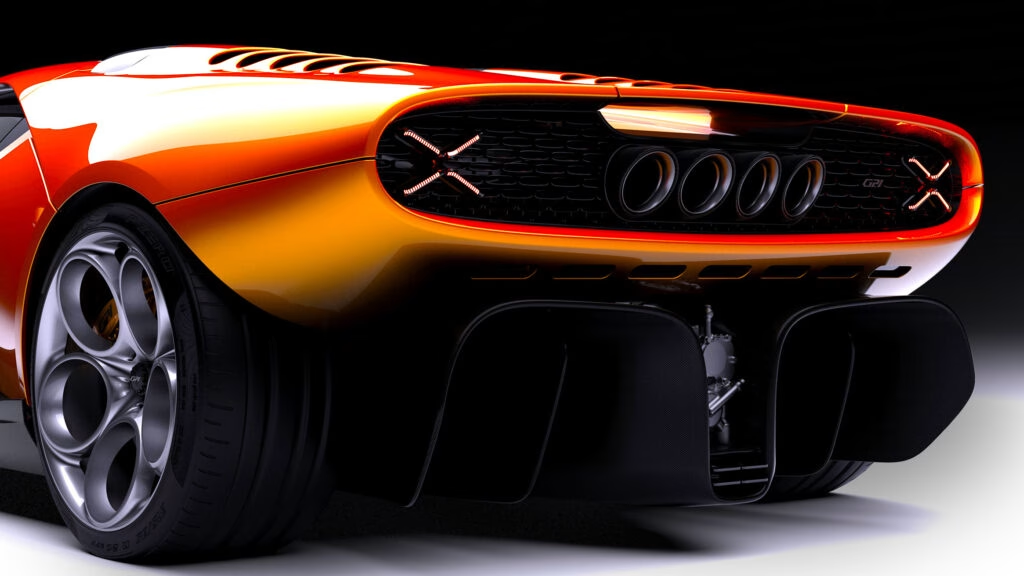What Makes the Garagisti & Co GP1 Stand Out Among Modern Supercars?
If you’ve been following the world of high-performance cars, you know that naturally aspirated engines and manual transmissions have become unicorns—rare, coveted, and usually reserved for those with deep pockets and a taste for the analog. Enter the Garagisti & Co GP1, a supercar that doesn’t just nod to the past; it practically lives there, but with a modern twist.
This isn’t just another carbon-fiber rocket. The GP1 is the brainchild of Angel Guerra, a designer whose resume includes stints at Bugatti and Rimac. That pedigree shows. From the moment you lay eyes on its sculpted bodywork, it’s clear this car is a love letter to icons like the Lancia Stratos Zero and Lamborghini Countach. It sits low, wide, and purposeful on forged teledial wheels—skip the optional five-spokes, trust me.
How Rare and Exclusive Is the GP1?
Let’s talk numbers. Garagisti & Co plans to build just 25 GP1s, each with a price tag north of £2.45 million (about $3.3 million before taxes). That’s rarer than most hypercars, and the exclusivity is part of the appeal. The company’s name is a cheeky nod to the “garagisti” privateers who shook up Grand Prix racing in the 1950s and ‘60s—small teams with big ambitions. The GP1 channels that same rebellious spirit, but with a distinctly British-Italian flavor.
What’s Under the Hood—and Why Does It Matter?
Here’s where things get spicy. The GP1 packs a 6.6-liter, naturally aspirated V12 developed by Italtecnica, a name well-known in Italian motorsport circles. No turbos. No hybrid trickery. Just pure, old-school mechanical magic. This engine revs to a glorious 9,000 rpm and delivers 789 horsepower and 516 lb-ft of torque.
Now, those numbers might not sound earth-shattering in an era where 1,000-horsepower hypercars are almost routine. But here’s the kicker: the GP1 weighs just 2,200 pounds (1,000 kg) dry. For context, that’s over 40% lighter than a Lamborghini Revuelto, which is weighed down by hybrid systems and turbochargers. The result? A power-to-weight ratio that promises a driving experience as raw and immediate as anything on four wheels.
Why Go Analog in a Digital Age?
Step inside the GP1 and you’re greeted by a cockpit that’s refreshingly free of screens and distractions. The rising center console, reminiscent of the Porsche Carrera GT, houses a black shifter linked to an Xtrac six-speed manual gearbox. This isn’t just for show. The manual transmission is a deliberate choice, giving drivers a tactile, connected feel that’s all but vanished from today’s supercars.
There’s a growing movement among enthusiasts who crave this kind of analog engagement. According to a 2023 report by JATO Dynamics, demand for manual transmissions in high-end sports cars has actually increased, even as the rest of the market goes fully automatic or electric. The GP1 is perfectly positioned to ride that wave.
How Does the GP1 Compare to Other Lightweight Legends?
It’s impossible not to mention the Gordon Murray Automotive T.50 in this conversation. The T.50 is another featherweight V12 supercar, seating three and revving to an astronomical 11,500 rpm. But the GP1 edges it out in power (789 hp vs. 654 hp) and, to many eyes, in sheer visual drama. Both cars are statements against the tide of complexity and digitalization, but the GP1’s design and exclusivity give it a unique edge.
What’s the Driving Philosophy Behind the GP1?
Garagisti & Co isn’t just building a car—they’re making a statement. In an era obsessed with lap times, tech features, and ever-more elaborate hybrid systems, the GP1 is a reminder that purity still matters. Every detail, from the carbon-fiber body to the analog controls, is about stripping away the unnecessary and focusing on the joy of driving.
This philosophy isn’t just nostalgia. It’s a response to a market where many enthusiasts feel alienated by the digital takeover. The GP1’s approach is resonating—industry analysts at S&P Global Mobility have noted a renewed interest in lightweight, analog cars among collectors and drivers who want more than just numbers on a spec sheet.
The Big Takeaway? Analog Supercars Like the GP1 Are About Smarter Choices, Not Perfection
The Garagisti & Co GP1 isn’t trying to be everything to everyone. It’s a bold, unapologetic celebration of what makes driving special: sound, feel, and connection. In a world where perfection often means more tech and less soul, the GP1 proves that sometimes, less really is more. Start with one analog change in your own driving life—maybe a spirited drive on a favorite road or even just learning to heel-and-toe—and you’ll likely spot the difference by month’s end. The result? Pure magic.

